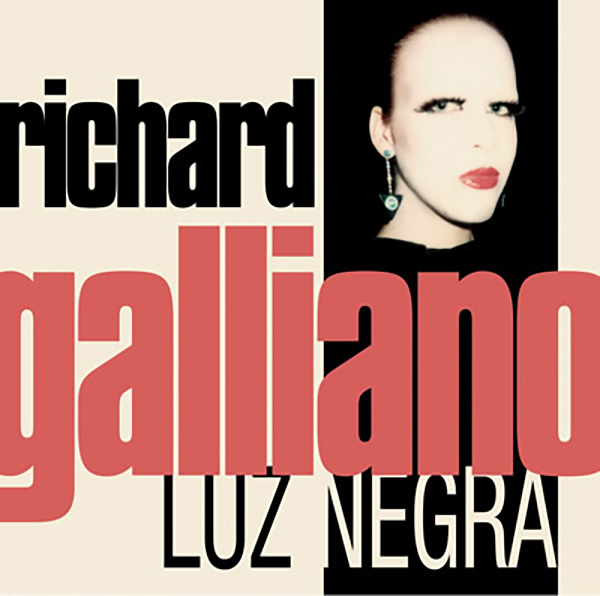
by Ian Mann
March 02, 2007
/ ALBUM
Galliano is a true virtuoso, his accordion swoops, swells and soars. On the solo pieces it is hard to believe that all the notes are played with just one pair of hands.
Warner Jazz is set to release “Luz Negra” the latest recording by French accordion virtuoso Richard Galliano. It will be complemented by the independent release of a remastered version of Galliano’s acclaimed 1992 album “Solo”.
Born in 1950 Galliano has extended the role of the accordion into the spheres of jazz and classical music. He has also updated the French musette tradition as well as playing Argentinian tango. Galliano has also collaborated with many leading jazz musicians including Chet Baker, Ron Carter, Jan Garbarek,Joe Zawinul,Michel Petrucciani, Toots Thielmans, Didier Lockwood, Philip Catherine, Louis Sclavis, Palle Danielsson and Joey Baron.
“Luz Negra” was recorded in September 2006 by Galliano and his Tangaria Quartet. It concentrates on the Latin American aspects of his playing and features strong melodies from not only the pen of Galliano himself but from composers as varied as Astor Piazzolla and Erik Satie.
The music is by turns exuberant and joyous, mournful and reflective but always played with skill and passion. To English ears there is an air of the exotic and mysterious about it, a film-noirish quality. The album was recorded in Sao Paulo, Brazil and encompasses both South American influences and Galliano’s European roots.
Galliano’s accordion is at the heart of the albums fourteen tracks. His playing is remarkably nimble but sounds effortless. The passionate violin of Alexis Cardenas cuts a swathe through many of the tunes, his lines wrapping around those of Galliano. The rich undertow of percussionists Rafael Meijas and Amoy Ribas adds rhythmic impetus and the whole is grounded by the supple, resonant bass of Philippe Aerts who negotiates the tricky rhythms with ease.
On certain tracks mandolin virtuoso Hamilton De Holanda makes a distinctive contribution such as on Nelson Cavaquinho’s title track and Galliano’s joyous “Fou Rire”. De Holanda also appears on the gently nostalgic Galliano composition “Sanfona” and on the energetic shuffle of the leader’s “Sertao”.
Elsewhere front line duties are shared by Galliano and Cardenas and they canter through upbeat numbers such as “Tangaria”. Cardenas plays pizzicato on the Neapolitan flavoured “Guarda Che Luna” with Aert’s rich bass also prominent. “Chat Pitre” is more reflective as is Satie’s brooding and atmospheric “Gnossiene No. 3”.
Piazzolla’s “Escualo” is dramatic tango with its stabbing rhythms and impassioned violin. “Indifference” is an example of Galliano’s modern take on musette. “Des Voiliers” comes from the French chanson tradition and was co- written by Galliano and singer Claude Nougaro. Galliano was Nougaro’s musical director for many years.
On the haunting “Barbara” Galliano’s rich accordion tones sound almost organ like at times.
For the final two numbers “Flambee Montalbanaise” and “Les Forains” Cardenas sits out allowing Galliano full reign. The first of these is a brisk romp propelled by Ribas’ percussion and underpinned by Aerts. “Les Forains” is Galliano playing solo accordion in the Parisian tradition and links in nicely with his “Solo” album.
“Luz Negra” is an intriguing album, the kind of record that reveals fresh things with each listening. Superficially it can appear rather “samey” but in fact there is a widely differing range of styles and tempos. Fascinating stuff.
An album of purely solo accordion may sound like a daunting prospect but “Solo” has a lot more going for it than you might think. The sound is remarkably full, due in part to a degree of overdubbing. On some of the numbers Galliano is effectively having a musical conversation with himself. On “Chuiquelin De Bachin” he plays both accordion and the Argentinian bandoneon. “Adios Noninho” and “Oblivion” find him utilising up to four accordions.
All the music on the album was written by the great Argentinean tango master Astor Piazzolla. At the time of the recording Piazzolla was ill and had been in a coma for two years. Galliano’s album was therefore “a tribute to a dying man”.
Galliano plays with fire and passion but also with a tenderness reflecting his love and respect for Piazzolla. Solo pieces include three of Piazzolla’s piano preludes, lovingly arranged by Galliano at the composer’s behest for concert accordion.
However the highlight is probably Piazzolla’s five-part “Ballet Tango” which opens the album.
Galliano is a true virtuoso, his accordion swoops, swells and soars. On the solo pieces it is hard to believe that all the notes are played with just one pair of hands.
“Solo” is a remarkable tour de force but for listeners new to Galliano’s music the more accessible “Luz Negra” is probably the best place to start.
blog comments powered by Disqus